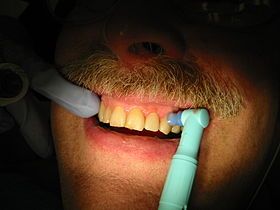History and Equipment of Tooth Polishing
- Tooth polishing dates back to Roman and Greek times
- Pierre Fauchard introduced tooth polishing to remove dental stains
- Early polishing pastes consisted of finely ground coral, egg shells, ginger, or salt
- Alfred Fones educated students on coronal tooth polishing
- Full mouth polishing was common practice until the 1990s to 2000s
- Prophylactic paste contains abrasives of varying size, shape, and hardness
- Prophylactic paste is available in fine, medium, coarse, and super-coarse grits
- Rubber cups, also known as prophy cups, are used with polishing paste
- Bristle brushes are used in the prophylaxis angle with polishing paste
- Prophy angle is the most commonly used tool for tooth polishing
Selective Polishing and Extrinsic Stain
- Current evidence suggests that tooth polishing should be based on individual needs
- Previously, tooth polishing was provided at every hygiene appointment
- Ethical dilemma exists regarding whether tooth polishing should be routine
- Prophylactic polishing is only necessary when extrinsic stain is present
- Patient expectations have influenced the debate on tooth polishing
- Discoloration of the enamel can be caused by factors such as food and beverages
- Chromogenic bacteria in plaque can also cause staining
- Smoking, antimicrobial rinses, and exposure to metallic dust can lead to extrinsic staining
- Prophylactic polishing can remove most extrinsic stains
- Proximal surfaces of teeth can be polished using dental tape
Adverse Effects and Benefits of Tooth Polishing
- Tooth polishing may remove the outer layer of enamel
- Saliva and fluoride in polishing pastes can assist in remineralizing the enamel
- Restorations may be damaged by conventional tooth polishing
- Soft tissues can be traumatised by improper technique or prior inflammation
- Aerosols produced during tooth polishing can transmit infectious diseases and contaminate surfaces
- Removes surface stains
- Enhances the appearance of teeth
- Improves oral hygiene
- Helps prevent tooth decay
- Promotes fresh breath
Tools and Techniques Used in Tooth Polishing
- Dental handpiece
- Prophylaxis paste
- Rubber cup or bristle brush
- Air polishing device
- Fluoride varnish
Safety Measures and Considerations for Different Patient Groups
- Proper infection control protocols
- Use of protective eyewear
- Adequate suction to prevent aspiration
- Regular maintenance of dental equipment
- Proper disposal of waste materials
- Children: Use of flavored prophylaxis paste
- Pregnant women: Avoidance of certain abrasive materials
- Patients with sensitive teeth: Use of desensitizing agents
- Elderly patients: Gentle technique to prevent gum irritation
- Patients with dental restorations: Careful polishing around restorations
Potential Risks and Limitations of Tooth Polishing
- Gingival irritation or bleeding
- Temporary tooth sensitivity
- Risk of aerosol production
- Limited effectiveness on deep stains
- Inability to remove certain types of stains (e.g., intrinsic stains)
Tooth polishing procedures are done to smooth the surfaces of teeth and restorations. The purpose of polishing is to remove extrinsic stains, remove dental plaque accumulation, increase aesthetics and to reduce corrosion of metallic restorations. Tooth polishing has little therapeutic value and is usually done as a cosmetic procedure after debridement and before fluoride application. Common practice is to use a prophy cup—a small motorised rubber cup—along with an abrasive polishing compound.
| Tooth polishing | |
|---|---|
 Polishing a tooth using a prophy cup. | |
| ICD-9-CM | 96.54 |
| MeSH | D003775 |